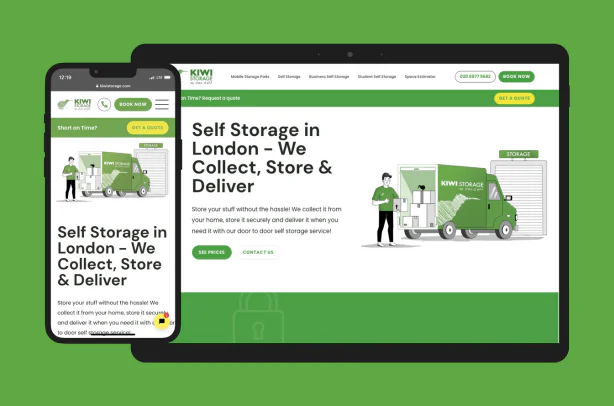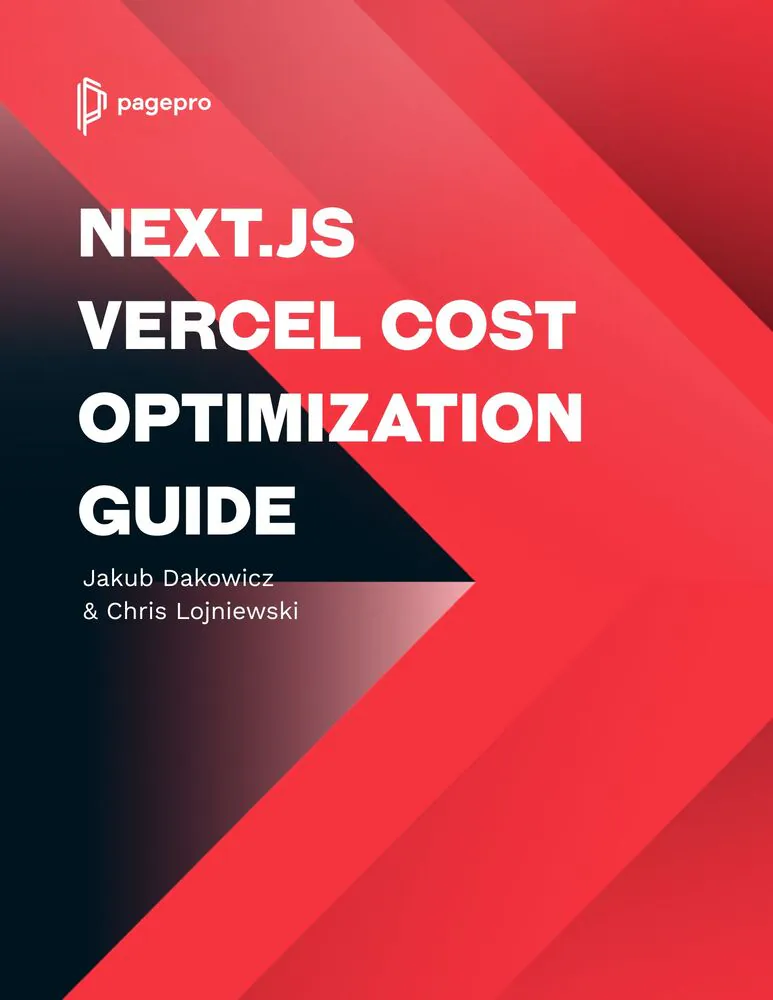UI Component Library – When Should You Build Your Own?

Do You Need A Custom UI Component Library?
A website’s success often depends on the quality of its user interface (UI). A well-designed UI increases user satisfaction, drives conversions, and strengthens brand identity. A component library is an essential part of any UI, but should you pick a custom or a ready-made solution?
Are you aiming to create a unique online experience? A custom UI component library, like those used by Netflix, Amazon, and Uber, can set your brand apart from the competition and ensure future scalability but requires the investment of time and resources.
Ready-made component libraries offer a practical solution for smaller projects or tighter budgets but without the same level of individuality. They provide pre-designed elements that save development time and costs while still delivering a high-quality user experience.
A decision between custom and ready-made depends on your specific project needs. Consider your budget, timeline, and desired level of customization to choose the best option for an exceptional user experience.
What Is a Component Library?
A component library is a collection of UI elements, such as buttons, input fields, and navigation menus, that can be used to streamline web development.
These elements are often designed with a consistent style and functionality, making it easier to create cohesive and user-friendly interfaces. JavaScript frameworks like React and Vue offer a variety of open-source component libraries that developers can leverage to accelerate their projects.
What Is a Design System?
A design system is a central hub where all design assets and components are stored, making them easily accessible for developers to reuse. It serves as the backbone for creating cohesive, high-quality products by bringing together everything designers and developers need in one place. It’s a subset of a component library.
One of the standout benefits of a design system is its ability to update instantly across various platforms – very useful for managing both web and mobile apps. Unlike a custom component library, a design system creates a connected and collaborative environment that bridges the gap between designers and developers.
A design system functions as the guiding framework for a brand, incorporating all UI-related standards, such as design principles, components, and themes.
What is Atomic Design?

Atomic design approach breaks down components into their simplest forms—atoms, molecules, and organisms—before assembling them into templates and complete pages. This method ensures consistency and quality throughout the final product.
Not sure which solution is best for your project?
Types of Component Libraries
Ready-made Component Library
These are the types of libraries that are pre-build or made by a third-party organization. Often designed to fit a wide range of needs, ready-made component libraries can be a great addition to your UI.
Examples of UI Component Libraries:
Chakra UI
Designed with simplicity and accessibility in mind, Chakra UI is a modular component library for React applications. It allows developers to create custom-styled components with ease, thanks to its flexible and themeable design system.
Semantic UI
Built around natural language conventions, Semantic UI is a responsive front-end framework using HTML to craft appealing websites. It offers a vast range of themes and customization options.
Bootstrap
Bootstrap is a CSS framework that provides a full suite of pre-styled components and utilities. It enables quick development of responsive, mobile-first websites with minimal effort.
MUI Core (Material UI)
Implementing Google’s Material Design principles, MUI Core is a React component library that offers a comprehensive set of customizable components.
Ant Design
Tailored for enterprise-level products, Ant Design is a design system and React UI library. It provides a robust collection of components and design patterns focused on creating clean, consistent, and efficient user interfaces.
Quick poll
What is your line of work?
Custom Component Library
Unlike libraries you can purchase online, custom component libraries are developed from scratch by in-house designers or developers. They are made specifically for your company and reflect its brand.
Examples of Custom Component Libraries:
Google Material Design
Aside from its core components (buttons, cards, and text fields), Google Material Design also includes more complex elements such as data tables, calendars, or progress indicators. All of them are designed to adhere to the company-wide brand principles, resulting in a consistent and intuitive user experience across Google’s products.
Apple Human Interface Guidelines
Apple’s design system goes beyond visual elements and includes guidelines for interaction, animation, and accessibility. Thanks to the custom component library all Apple products abide by these guidelines, and create a cohesive and user-friendly experience.
Microsoft Fluent Design
Fluent Design mimics natural art media, ink, and acrylic materials to create more immersive and fluid visuals. Microsoft’s custom component library is designed to support these principles, providing components that feel integrated into the operating system and applications.
Netflix Hawkins System
Netflix’s custom component library includes elements specifically designed for video streaming, such as the video player, playback controls, and recommendations carousel. All of them are optimized for performance, user engagement, and a seamless viewing experience.
Amazon
The e-commerce giant Amazon has a vast component library, covering a range of use cases, like product cards, shopping carts, checkout forms, and rating systems. As expected, these components are made to handle the massive traffic and data loads of Amazon’s marketplace.
When to Build a Custom Component Library?
If you aim to establish a cohesive visual identity, creating a custom component library is a strategic move. By building a library of components, you lay the groundwork for future growth and expansion. When it’s time to develop sister apps, sub-brands or landing pages, you’ll have a readily available theme, like Uber did with Uber Eats.
Deciding between building a custom component library and using a ready-made one involves several key considerations. Here’s a guide to help you make the best choice based on your team’s capabilities, long-term vision, technical needs, and budget.
You Have the Appropriate Resources
A custom library allows to establish a unique visual identity that aligns perfectly with your brand’s aesthetic. As a downside, it requires both time and resources, as designing, developing, and maintaining the library demands ongoing effort. If you have a skilled development team and a sufficient budget, building a custom component library might be the right choice.
In some cases it can be more cost and time effective to develop with a ready-made component library but keep in mind that offered elements might not fully capture your brand’s image or fit all use cases perfectly.
Your Brand Has a Long-Term Vision
Brands focused on long-term visual consistency and future scalability, tend to pick custom component libraries. This choice provides greater control over the design and development process, which is particularly important if your brand operates across multiple digital touchpoints. Maintaining this scalability and visual consistency over multiple channels requires dedicated resources for updates and compatibility checks.
While generally scalable, ready-made libraries may introduce changes through community-driven updates that don’t always align with your brand’s needs, affecting the consistency of your image.
Take Kiwi Storage for an example. They had an established brand and wanted to expand their visual identity, so we decided to help them build a custom UI component library.

You Want to Ensure Good Performance and Integration
Custom component libraries can be optimized specifically for your use cases, ensuring that performance is finely tuned to your needs. This can be particularly advantageous if your application has unique performance requirements or needs to integrate seamlessly with an existing tech stack.
Ready-made libraries, though often well-optimized for general use, might include unnecessary features that add bloat. While these can be streamlined, the integration process may be easier initially but could become challenging if the library doesn’t align perfectly with your systems.
You Care About Compatibility and Security
Building a custom library gives you full control over cross-browser and cross-platform compatibility. Security is another area where a custom library allows for tailored practices, but the responsibility for identifying and fixing vulnerabilities rests solely with your team.
In contrast, ready-made libraries often come well-tested for compatibility across various environments and remain safe thanks to the community’s vigilance. Still, you must stay on top of updates to ensure security, as new updates come in.
You Want to Have Independent Support
A thorough documentation and a good onboarding process are a must for custom libraries. They ensure that future developers can maintain and extend the library effectively. Long-term support is dependent on your internal resources, which can be a double-edged sword—offering full control but requiring sustained investment.
Ready-made libraries usually come with extensive documentation and community support, which can ease the onboarding process. There is a risk, however, as libraries become unsupported or abandoned.
Benefits of Building a Custom UI Component Library
For Business
- With complete control over the code, your development team can optimize components for faster load times, resulting in better app and website performance.
- Improved site speed directly boosts your search engine rankings, especially on Google. Custom components can be made lightweight and efficient, unlike some clunky ready-made options.
- A tailored UI design can improve conversion rates. Custom components often offer better aesthetics, a smoother user experience, and stronger brand alignment.
- Designers and developers can work seamlessly together, using the same files. This improved collaboration fosters creativity and reduces friction between teams.
For Developers
- A custom component library serves as a single source of truth, ensuring that both designers and developers know exactly what to do, reducing confusion, and streamlining processes.
- With everything standardized, handing off projects becomes smoother. Clients can pick up right where your team left off, making your services more attractive.
Downsides of Building a Custom UI Component Library
- Developing a custom UI library requires an upfront investment, whether by hiring new teams or reallocating existing resources.
- Building a UI library from scratch demands considerable time and effort. Even experienced teams will need to dedicate time, potentially delaying other projects. However, this investment often pays off in the long run.
Is Custom UI Component Library The Choice For You?
Custom libraries offer complete control, great performance, and brand consistency, especially when running multiple channels. Still, they require an investment of developer time and a bigger budget. At the same time, ready-made libraries are cost-effective and efficient, which is perfect for smaller projects, but lack the individuality and uniqueness custom libraries provide.
In the end, the choice comes down to how much you value customization and scalability versus speed and simplicity. Carefully weigh these factors to make a decision best supporting your project’s success and your brand’s future growth.
Ready To Choose The Perfect solution for your project?



